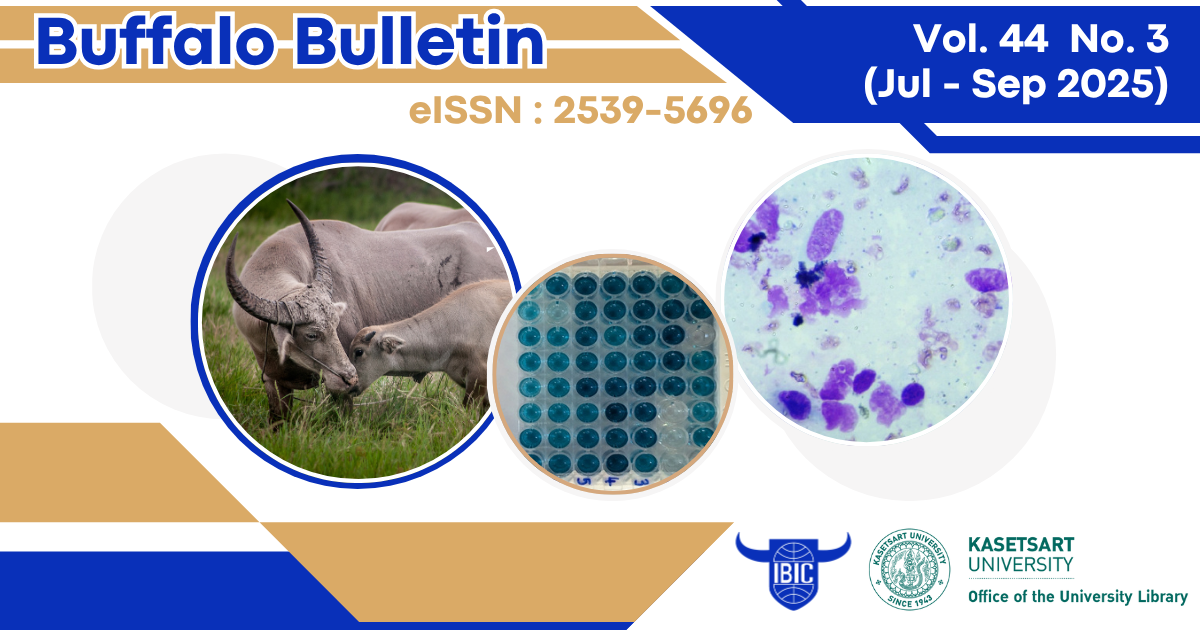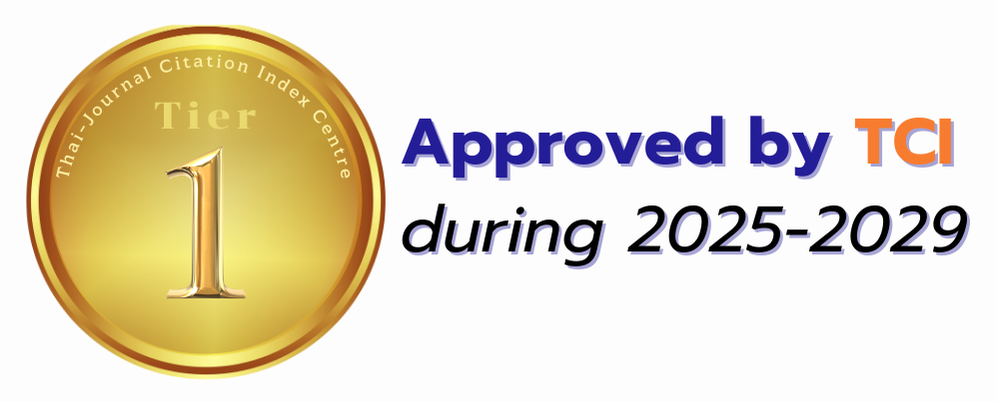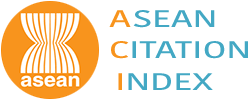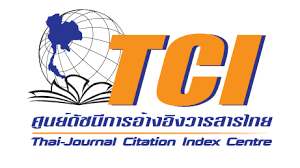METHANE FOOTPRINT OF MILK IN INTEGRATED CROP-LIVESTOCK FARMS IN INDIAN PUNJAB
DOI:
https://doi.org/10.56825/bufbu.2025.4434298Keywords:
Bubalus bubalis, buffaloes , enteric methane , livestock agriculture, integrated crop-livestock farms, methane footprint, PunjabAbstract
The present study was undertaken to examine the methane footprint of milk in integrated crop-livestock farms in Indian Punjab by taking stock of a crucial narrative, i.e., the methane emission in relation to the specie-specific milk production. The formulations of the study are based on the primary data from 180 mixed farms with a herd volume of 1064 heads from all three agro-climatic zones (Central Plain Zone: Zone 1, South-western Zone: Zone 2, and Sub-mountainous Zone; Zone 3) of Punjab. The enteric methane emission at the farm level has been quantified by using Tier II methodology given by The Intergovernmental Panel on Climate Change (IPCC, 2007), The estimation has provided evidence that the methane emission rate has been the lowest in the case of indigenous cattle in comparison to buffalo and crossbred cattle. The entire in-milk herd accounted for 81.2% of the farm level enteric methane emission, the contribution of lactating buffalo being the highest (50.3%) followed by crossbred (27%) and indigenous cattle (3.9%). The study has conclusively established the supremacy of crossbred cattle from the environmental sustainability standpoint, with the carbon footprint of crossbred cows’ milk being the lowest (681.6 g CO2-e/kg milk) in comparison to that of buffalo (836.1 g CO2-e/kg milk) and indigenous cattle (900.9 g CO2-e/kg milk). The long-term solution for enhancing the sustainability of livestock sector lies in lowering the quantum of methane emission, which calls for policy prescriptions to address the issue of lowering the emissions and enhancing the productivity.
Downloads
Metrics
References
Anonymous. 2019. Livestock Production Statistics of India - 2019. Vet Extension Prosperous Livestock Prosperous Nation. Available on: https://www.vetextension.com/livestock-animal-production-statistics-of-india-2019/
Anderson, D.R., D.J. Sweeney and T.A. Williams. 2012. Statistics for Business and Economics. Cengage Learning India Private Limited, New Delhi, India.
Crutzen, P.J., I. Aselmann and W. Seiler. 1986. Methane production by domestic animals, wild ruminants, other herbivorous fauna, and humans. Tellus B: Chemical and Physical Meteorology, 38B: 271-284. DOI: 10.1111/j.1600-0889.1986.tb00193.x
Durocher, G.Y., A.P. Andrew, D. Bastviken, R. Conrad, C. Gudasz, A. St-Pierre, N. Thanh-Duc and P.A. del- Giorgio. 2014. Methane fluxes show consistent temperature dependence across microbial to ecosystem scales. Nature, 507(7493): 488-491. DOI: 10.1038/nature13164
Eisler, M.C., M.R.F. Lee, J.F. Tarlton, G.B. Martin, J. Beddington, J.A.J. Dungait, H. Greathead, J. Liu, S. Mathew, H. Miller, T. Misselbrook, P. Murray, V.K. Vinod, R.V. Saun and M. Winter. 2014. Agriculture: Steps to sustainable livestock. Nature, 507(7490): 32-34. DOI: 10.1038/507032a
FAO. 2006. Livestock Long Shadow: Environmental Issues and Options. Food and Agriculture Organization, United Nations, Rome, Italy.
FAO. 2010. Greenhouse Gas Emissions from the Dairy Sector: A Life Cycle Assessment. Food and Agriculture Organization, United Nations, Rome, Italy. Available on: https://www.fao.org/4/k7930e/k7930e00.pdf
Gerber, P.J., H. Steinfeld, B. Henderson, A. Mottet, C. Opio, J. Dijkman, A. Falcucci and G. Tempio. 2013. Tackling Climate Change Through Livestock: A Global Assessment of Emissions and Mitigation Opportunities. Food and Agriculture Organization, United Nations, Rome, Italy.
Golub, A.A., B.B. Henderson, T.W. Hertel, P.J. Gerber, S.K. Rose and B. Sohngen. 2013. Global climate policy impacts on livestock, land use, livelihoods and food security. In The Proceedings of the National Academy of Sciences, USA. 110(52): 20894-20899. Available on: https://www.pnas.org/content/pnas/110/52/20894.full.pdf
IPCC. 2007. Climate change 2007: The physical science basis. p. 129-234. In Solomon, S., D. Qin, M. Manning, Z. Chen, M. Marquis, K.B. Averyt, M. Tignor, H.L. Miller. (eds.) Contribution of Working Group I to the Fourth Assessment Report of the Intergovernmental Panel on Climate Change, Cambridge University Press, Cambridge, UK. Available on: https://www.ipcc.ch/site/assets/uploads/2018/05/ar4_wg1_full_report-1.pdf
Kashish and P. Kataria. 2020. Livestock economy of India with particular reference to Punjab. International Journal of Livestock Research, 10(9): 81-90. DOI: 10.5455/ijlr.20200523040433
Lerner, J., E. Matthews and I. Fung. 1988. Methane emission from animals: A global high-resolution data base. Global Biogeochemical Cycles, 2: 139-156. DOI: 10.1029/GB002i002p00139
Patra, A.K. 2012. Estimation of methane and nitrous oxide emissions from Indian livestock. J. Environ. Monitor., 14: 2673-2684.
Patra, A.K. 2014. Trends and projected estimates of GHG emissions from Indian livestock in comparisons with GHG emissions from world and developing countries. Asian-Austral. J. Anim. Sci., 27(4): 592-599.
Rotz, A.C. 2017. Modeling greenhouse gas emissions from dairy farms. J. Dairy Sci., 101(7): 6675-6690. DOI: 10.3168/jds.2017-13272
Sejian, V., R. Bhatta, P.K. Malik, B. Madiajagan, Y.A.S. Al-Hosni, M. Sullivan and J.B. Gaughan. 2016. Livestock as sources of greenhouse gases and its significance to climate change. In Moya, B.L. and J. Pous. (eds.) Greenhouse Gases. IntechOpen, DOI: 10.5772/62135.
Thoma, G., J. Popp, D. Shonnard, D. Nutter, M. Matlock, R. Ulrich, W. Kellogg, D.S. Kim, Z. Neiderman, N. Kemper, F. Adom and C. East. 2013. A regional analysis of greenhouse gas emissions from USA dairy farms: A cradle to farm-gate assessment of the American dairy industry circa 2008. International Dairy Journal, 31: S29-S40. DOI: 10.1016/j.idairyj.2012.09.010
Downloads
Published
How to Cite
Issue
Section
License
Copyright (c) 2025 Buffalo Bulletin

This work is licensed under a Creative Commons Attribution-NonCommercial-NoDerivatives 4.0 International License.









.png)








